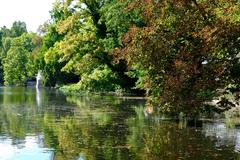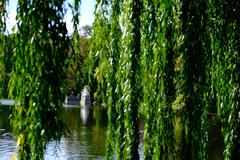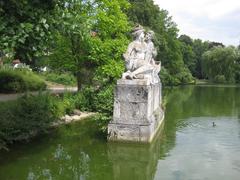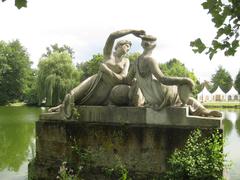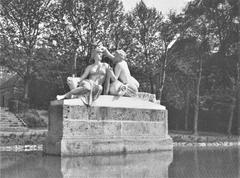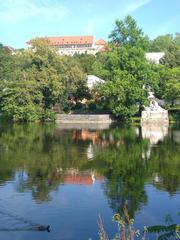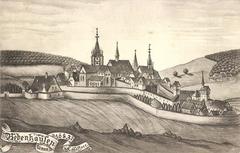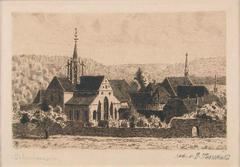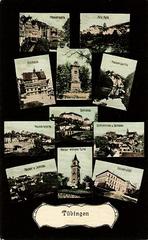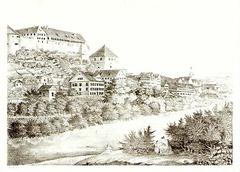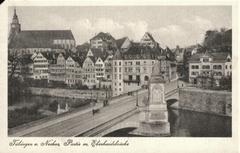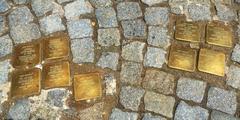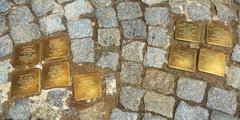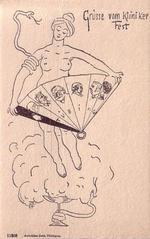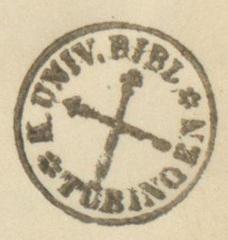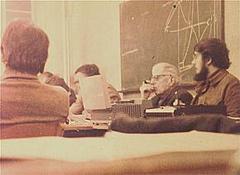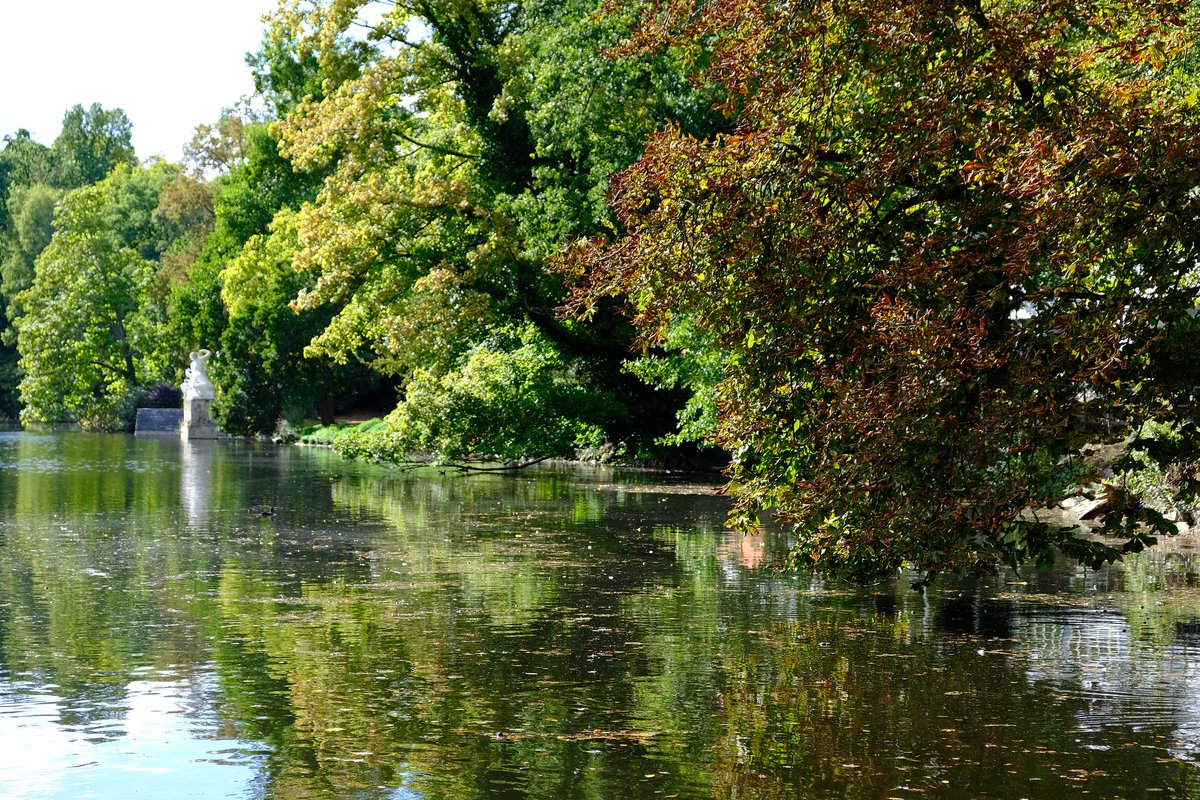
Danneckersche Nymphengruppe Visiting Hours, Tickets, and Guide – Tübingen Historical Sites
Date: 14/06/2025
Introduction
Nestled in the university town of Tübingen, Germany, the Danneckersche Nymphengruppe is a celebrated neoclassical sculpture that offers visitors a striking encounter with early 19th-century German artistry. Created by Johann Heinrich von Dannecker between 1808 and 1810, it depicts two mythological nymphs—the Meadow Nymph and the Water Nymph—symbolizing the harmony and interdependence of land and water. With its rich cultural resonance, the Nymphengruppe is a must-see for art lovers, history enthusiasts, and those exploring Tübingen’s historic sites.
The sculpture can be experienced at two locations: the original restored sandstone group is displayed indoors at the Kunsthalle Tübingen’s Literaturcafé, while a faithful stone cast replica stands outdoors by the scenic Anlagensee park. Both settings offer unique perspectives, inviting visitors to appreciate this neoclassical masterpiece amid Tübingen’s lush natural and urban landscapes.
This guide provides essential details on visiting hours, ticket prices, accessibility, travel tips, nearby attractions, and photographic recommendations. It also explores the sculpture’s artistic origins and its role in Tübingen’s cultural heritage. For official schedules and updates, visit the Kunsthalle Tübingen official website and the Tübingen Tourism site.
(References: Kunsthalle Tübingen, Tübingen Tourism, Stiftung Stuttgarter Brünnele)
Table of Contents
- Introduction
- Historical Background
- Artistic Context and Symbolism
- Visiting Information
- Getting There
- Nearby Attractions and Travel Tips
- Photographic Recommendations
- Cultural Significance
- Frequently Asked Questions (FAQ)
- Plan Your Visit
- Visuals and Media
- References
Historical Background
Johann Heinrich von Dannecker (1758–1841) was one of the leading German neoclassical sculptors. The Danneckersche Nymphengruppe was originally conceived between 1808 and 1810, portraying a meadow nymph crowning a water nymph as a gesture of gratitude—a poetic representation of nature’s interconnectedness. The original work first stood in Stuttgart, where it was celebrated for its idealized beauty but also sparked debate due to its depiction of semi-nude figures.
In 1926, a large sandstone copy was installed at Tübingen’s Anlagensee. Due to weathering, a stone cast replica was made in the 1980s, and the original was restored for indoor display at the Kunsthalle Tübingen’s Literaturcafé. Today, the sculpture serves as both an artistic focal point and a testament to the integration of public art into civic life (Stiftung Stuttgarter Brünnele).
Artistic Context and Symbolism
The Danneckersche Nymphengruppe embodies the ideals of German neoclassicism: harmony, idealized human forms, and reverence for classical antiquity. Its formal title, “Wiesennymphe, die Wassernymphe aus Dankbarkeit bekränzend” (“Meadow Nymph Crowning the Water Nymph in Gratitude”), alludes to the life-giving power of water and the cycles of nature. The sculpture’s serene expressions and balanced composition reflect Dannecker’s mastery and the era’s fascination with mythological themes.
Visiting Information
Location and Accessibility
- Kunsthalle Tübingen (Literaturcafé): Houses the original restored sandstone group indoors. Wheelchair accessible with ramps and elevators.
- Anlagensee Park: Outdoor stone cast replica in a lakeside setting. Accessible via paved paths suitable for wheelchairs and strollers.
Hours and Tickets
- Kunsthalle Tübingen (Literaturcafé):
Tuesday–Sunday: 10:00 AM – 5:00 PM
Closed on Mondays.
Admission: €7 adults; discounts for students and seniors. - Anlagensee Park:
Outdoor site open year-round during daylight hours.
Free admission.
Guided Tours and Special Events
- The Kunsthalle offers guided tours featuring the Nymphengruppe and other works; check the official website for schedules.
- Special exhibitions and cultural events may also highlight the sculpture.
Getting There
- By Public Transport: From Tübingen Hauptbahnhof, take bus line 1 or 8 to “Anlagensee” for the outdoor site. The Kunsthalle is a 10-minute walk from the train station.
- By Car: Parking is available near both the Kunsthalle and Anlagensee.
- On Foot: Both locations are within walking distance from the city center and major attractions.
Nearby Attractions and Travel Tips
- Tübingen Old Town: Wander cobblestone streets and visit the vibrant market square.
- Hölderlinturm: Former home of poet Friedrich Hölderlin, now a museum.
- Schloss Hohentübingen: Explore the castle and university museums.
- Neckar River: Enjoy a scenic boat ride or riverside picnic.
Travel Tips:
- Carry cash, as not all establishments accept cards (Happy to Wander).
- Visit during spring to early autumn for optimal weather and natural scenery.
- Early morning or late afternoon is best for photography due to soft lighting.
Photographic Recommendations
- Anlagensee:
The sculpture’s lakeside location creates beautiful reflections, especially at golden hour. - Kunsthalle Literaturcafé:
Indoors, a strategically placed mirror offers a view of the sculpture’s back for unique photos. Avoid flash to respect the indoor setting.
Cultural Significance
The Danneckersche Nymphengruppe is not only an artistic treasure but also a symbol of Tübingen’s commitment to integrating culture and public space. Its presence at Anlagensee and the Kunsthalle reflects the city’s rich intellectual and artistic heritage, offering residents and visitors alike a place for reflection, inspiration, and community events (Waymarking.com).
Frequently Asked Questions (FAQ)
Q: What are the opening hours of the Kunsthalle Tübingen?
A: Tuesday–Sunday, 10:00 AM–5:00 PM; closed Mondays.
Q: Is there an entrance fee to see the Danneckersche Nymphengruppe?
A: Admission to the Kunsthalle is €7 (adults). The Anlagensee sculpture is free to visit.
Q: Is the site wheelchair accessible?
A: Yes, both Kunsthalle and Anlagensee sites have accessible paths.
Q: Are guided tours available?
A: Yes, at the Kunsthalle; check their website for details.
Q: What is the best time for photography?
A: Early morning or late afternoon for natural light; spring–early autumn for lush surroundings.
Plan Your Visit
The Danneckersche Nymphengruppe is a highlight of Tübingen’s artistic heritage. Immerse yourself in its neoclassical beauty, explore the city’s historic sites, and enjoy the tranquil setting of Anlagensee. For current information on tours and exhibitions, visit the Kunsthalle Tübingen official website and Tübingen Tourism.
Visuals and Media
Alt text: Danneckersche Nymphengruppe sculpture depicting two nymphs by the water at Anlagensee, Tübingen.- Virtual Tour of Danneckersche Nymphengruppe
References
- Discover the Danneckersche Nymphengruppe in Tübingen: A Visitor’s Guide (Kunsthalle Tübingen)
- Visiting the Danneckersche Nymphengruppe in Tübingen: Hours, Tickets, and Cultural Insights (Tübingen Tourism)
- The Anlagensee and Its Setting (Tübingen Info and Tuepedia)
- Danneckersche Nymphengruppe Visiting Hours, Tickets & Guide to Tübingen’s Historic Sculpture (Stiftung Stuttgarter Brünnele)
- Komoot Highlight: Danneckersche Nymphengruppe
- Happy to Wander: Travel in Germany Tips
- Waymarking.com: Danneckersche Nymphengruppe
- Hikersbay: Practical Visitor Information
Call to Action
Ready to explore the Danneckersche Nymphengruppe and Tübingen’s cultural gems? Download the Audiala app for audio guides, insider tips, and up-to-date event notifications. Follow us on social media for inspiring travel stories and the latest updates. Plan your visit today and experience the timeless beauty of Tübingen’s neoclassical masterpiece!
